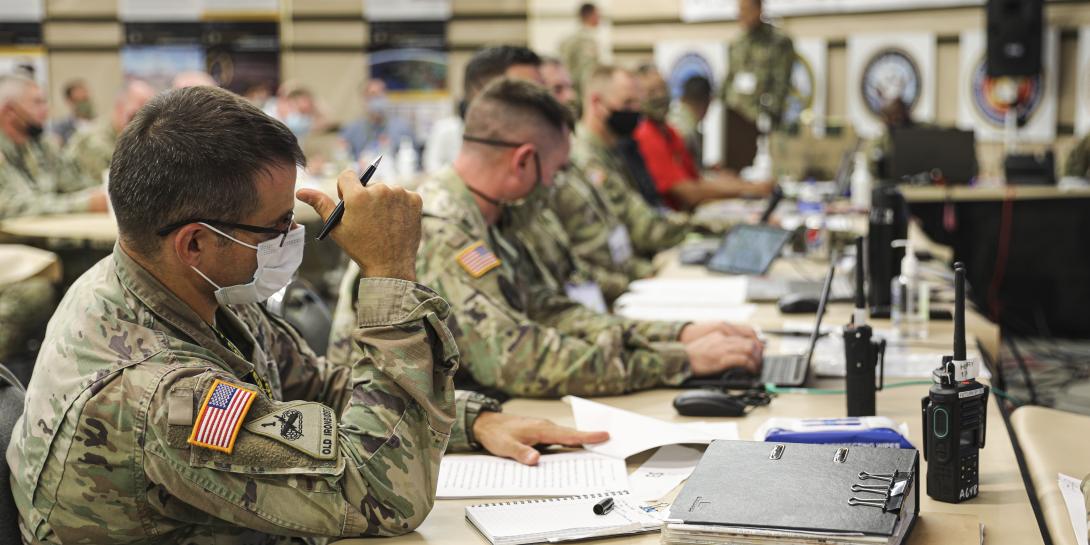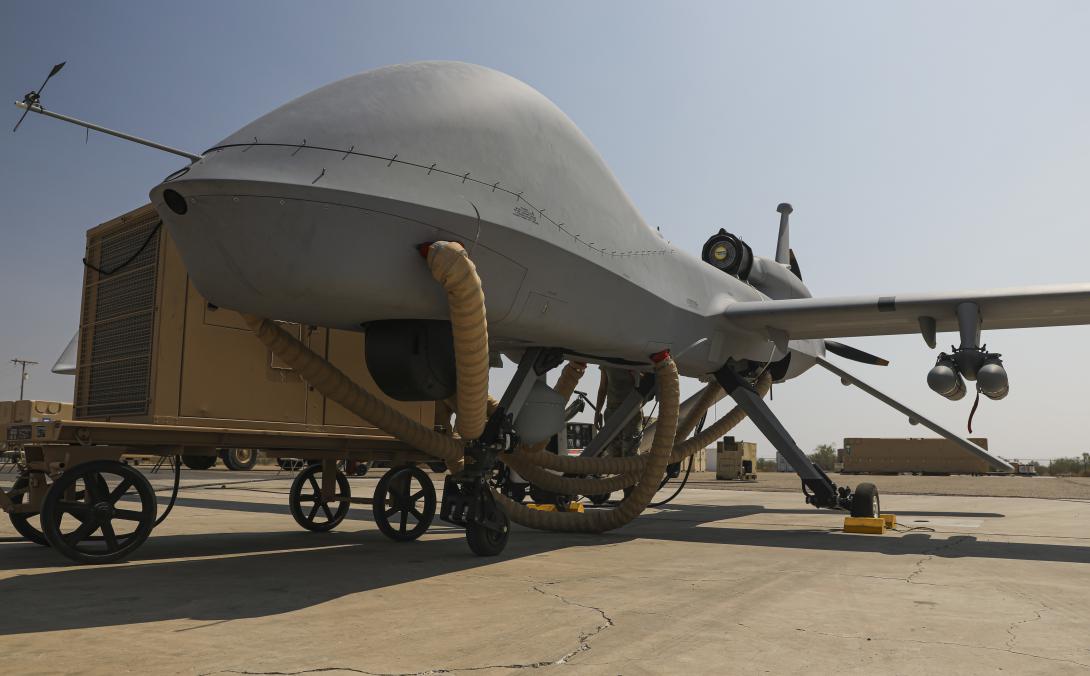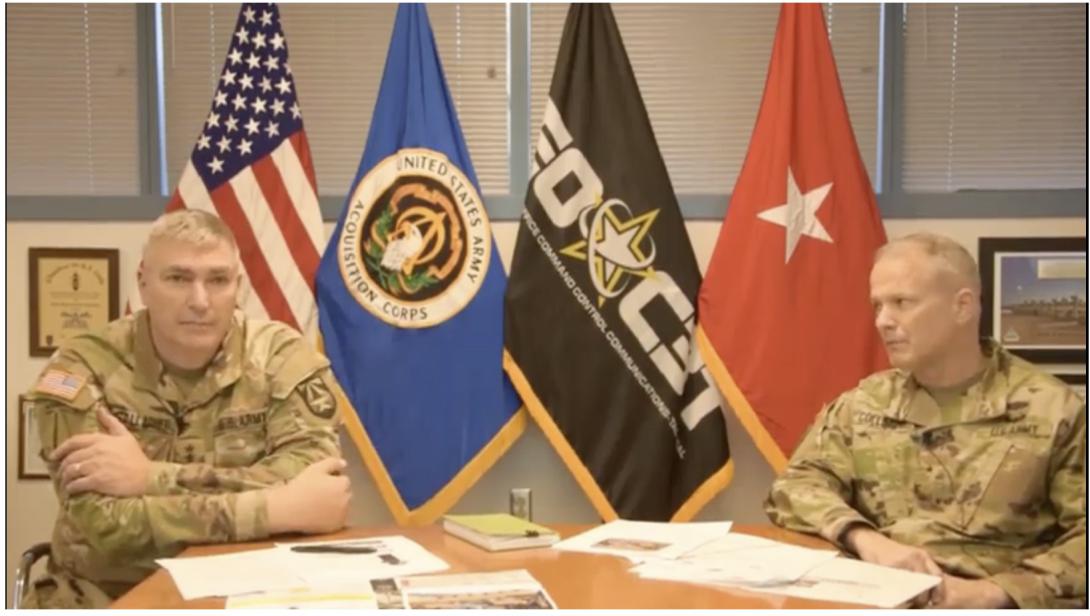Modernization Marches Forward
The U.S. Army is focusing on how to change its processes to be faster and more agile. One fundamental shift is in its approach to leveraging commercial solutions as well as those the other services and other organizations such as government laboratories have developed. These nearer-to-prime-time technologies would be available faster than PowerPoint capabilities.
As part of the TechNet Augusta virtual events, Maj. Gen. Peter Gallagher, USA, director, Network Cross-Functional Team, described how the Army continues its modernization efforts even during the pandemic. He was joined by Brig. Gen. Rob Collins, USA, program executive officer, Command, Control Communications–Tactical (PEO C3T), during the webinar.
Like many businesses in March 2020, the service went into maximum telework mode, assessed the impact of COVID-19 on its strategy in its modernization efforts and made many adjustments. In relaying how companies can do business with PEO C3T, Gen. Gallagher said the Army continued momentum and maintained continuity although it had to make some significant adjustments to the schedule. For example, exercise Defender 2020 in Europe had to be postponed.
“We just recently met with the vice chief of staff of the Army, and to quote Gen. [Joseph M.] Martin, ‘Without the network, all the other modernization priorities are really stovepipe dreams.’ So I would tell you, and we heard it before and after Project Convergence, the network is really the linchpin for pulling all this stuff together,” Gen. Gallagher shared.
Despite the delay of some activities, the Army was able to conduct Project Convergence 20 in the summer of 2020. Its first communications exercise (COMEX) yielded many lessons, the general said. The service worked this information into a plan of action and executable milestones, including an operational test in mid-January 2021 for radios as part of the integrated tactical network.
As a part of the exercise, the service brought together the critical components of its labs and the modernization priorities across the Army. These were stitched together with fielded capabilities into what the service is calling Capability Set 21, Gen. Gallagher explained. Emerging technologies will be part of future capability sets, he added.
Gen. Collins said this approach sets the foundation to ensure the Army continues with technical iterations. In addition, it enables inclusion of user feedback when creating the foundation for development security operations, or DevSecOps, in future capability sets and encourages early requirements reviews.
“We do some initial prototyping and experimentation that informs a preliminary design, then finalize training with the capability or a critical design review, and then finalize and move into procurement, so then we can ‘wash, rinse and repeat’ each year after,” he says.
“That’s been one of the [approaches] that's allowed us some tremendous success: not necessarily delivering the network all in a single Big Bang Theory-type approach, but … iteratively and build the foundation then be able to improve over time,” Gen. Collins adds.
During the presentation, the generals shared a quad chart that illustrates the Army’s lines of effort (LOEs). The chart both indicates the LOEs and how they align with directions coming out of the Joint Staff. With its teammates from the other services, the Army is aligning its LOEs with the combined joint all-domain command and control efforts that are being led out of the Joint Staff, the generals agreed.
As the service moves forward, the key is to modernize its network. Having an application programming interface (API)-driven architecture is a blueprint for progress, Gen. Gallagher said, because it allows the service to share APIs and software development kits. “Regardless of what vendor provides a solution, we have the ability to share and have common standards and the ability to ensure that we have the right translation mechanisms in place for data flow across our network,” he added.
“That's going to be key for all the services as we go forward to ensure we have joint interoperability and also the ability to connect with our coalition teammates,” Gen. Gallagher stated.
“The foundation of everything we do is the network. [The Army’s work] is really about delivering a unified network or what we're calling the army tactical grid. That's our integrated tactical network. That's everything that allows the bits and bytes to flow. It's our gateway systems. It's our radio systems at the tactical edges, those edge nodes that enable a mesh networking capability. It's [data] transport for terrestrial line of sight and the aerial tier for manned or unmanned platforms in the sky or space-based systems … that will incorporate things like low-earth-orbit, middle-earth-orbit and geosynchronous-orbit satellite constellations. [We are] really leveraging commercial technology, when and where applicable, where the threat is, and [the network] allows us to be able to exploit that to our advantage,” the general explained.
To learn more about how to do business with the Program Executive Officer–Command, Control Communications–Tactical, watch the video on the TechNet Augusta webinar channel.







Comments